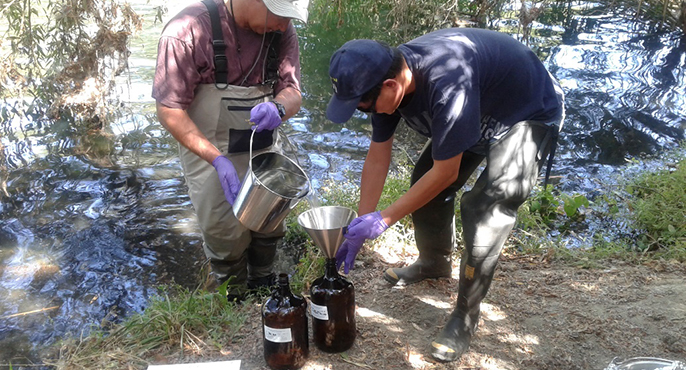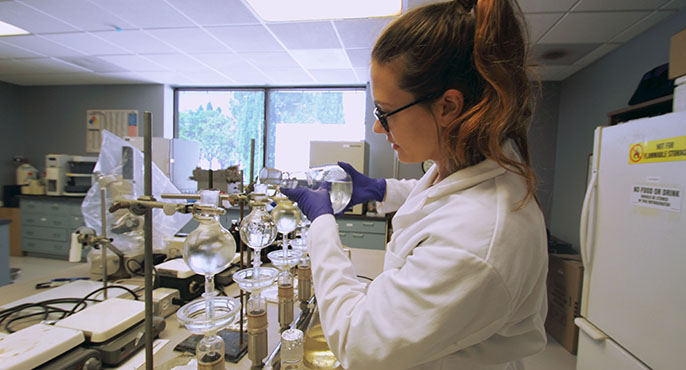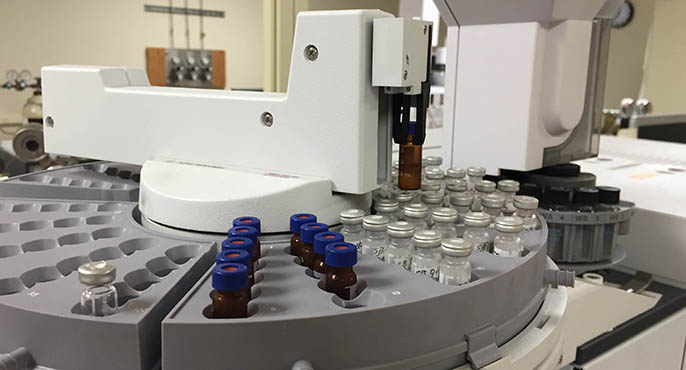![]() Emerging contaminants refer to the thousands of chemical contaminants in aquatic environments for which evidence is emerging that they may pose a threat to ecosystem and human health. Introduced to water bodies through a wide array of human activities, emerging contaminants – also known as contaminants of emerging concern (CECs) – have the potential to impact the health of fish and other animals over time. But because these effects generally are not lethal or acute, California’s water-quality management community has historically struggled to manage these chemical contaminants and document their biological impacts.
Emerging contaminants refer to the thousands of chemical contaminants in aquatic environments for which evidence is emerging that they may pose a threat to ecosystem and human health. Introduced to water bodies through a wide array of human activities, emerging contaminants – also known as contaminants of emerging concern (CECs) – have the potential to impact the health of fish and other animals over time. But because these effects generally are not lethal or acute, California’s water-quality management community has historically struggled to manage these chemical contaminants and document their biological impacts.
SCCWRP is part of an international research community working to develop next-generation strategies and tools for comprehensively monitoring emerging contaminants in aquatic environments. SCCWRP’s goal is to help water-quality managers efficiently and cost-effectively zero in on which chemicals and chemical classes pose potential health risks to wildlife and humans. These tools and strategies – both existing and still under development – form the core of a multi-tiered framework for monitoring emerging contaminants that is undergoing pilot testing statewide. The draft framework guides water-quality managers in applying a phased approach to monitoring that focuses on ascertaining health risks.

New paradigm for monitoring emerging contaminants
Emerging contaminants in aquatic environments require very different monitoring tools than pollutants that are acutely toxic to wildlife and humans. Although California’s water-quality management community closely monitors dozens of toxic pollutants in aquatic systems, these approaches are chemical-specific and thus cannot readily be scaled up to monitor all emerging contaminants across California’s diverse aquatic environments. Moreover, techniques like targeted chemical analysis and whole-organism toxicity testing are labor-intensive and costly. Thus, for these traditional techniques to be useful in the context of emerging contaminants, water-quality managers first need rapid, screening-level tools that can help them zero in on which classes of chemicals are potentially triggering adverse biological impacts.
The approach to emerging contaminant monitoring being developed by SCCWRP and its partners focuses on understanding the biological modes of action by which emerging contaminants can impact ecosystem and human health. Instead of simply measuring contaminant concentrations, researchers are looking for signs of adverse impacts to growth, reproduction and survival rates, then working backward to identify which biologically active chemicals could be responsible. Under this risk-based approach to contaminant monitoring, water-quality managers complete rapid, cost-effective screenings first, then deploy more labor-intensive, tailored technologies to follow up on the screening’s findings. This monitoring framework – which targets biological modes of action instead of specific chemical classes – is designed to remain relevant even as new chemicals enter production while others are phased out.

Developing rapid, screening-level tools
Much of SCCWRP’s research is focused on building, testing and refining tools and strategies to support the initial screening and diagnostic stages for monitoring emerging contaminants. The goal is to ensure these approaches are cost-effective, rapid, accurate and reproducible across California’s diverse aquatic environments.
- Bioanalytical cell screening assays: SCCWRP and its partners are working to show that high-throughput cell lines that respond to bioactive chemicals such as endocrine disruptors can be used to screen water samples for emerging contaminants – and that the results of the cell assay screenings can be reliably linked to adverse biological effects in animals in the environment.
- Passive sampling methods: SCCWRP and its partners are working to adapt cost-effective passive sampling technology to detect chemical contaminants at low concentrations in the water column. Passive samplers consist of commercially available sorbents or exchange media, such as polyethylene and silicon, that absorb chemicals from the water column over time. They can be used in tandem with bioanalytical cell screening assays and/or traditional chemical monitoring.
- Non-targeted chemical analysis: SCCWRP and its partners are working to adapt state-of-the-art chromatography-mass spectrometry technology to separate and identify unknown chemicals based on common physical and chemical characteristics. Unlike traditional targeted chemical analysis that uses standardized protocols to detect specific chemicals of interest, chemicals with similar characteristics are identified via cross-referencing with non-targeted chemical libraries.


